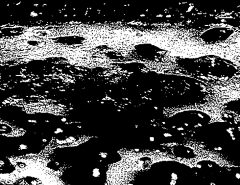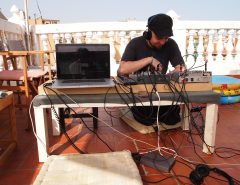Desde aquellas imágenes del escudo de megáfonos que el gobierno de Seul denominó Anti-Pyonynag mucho se ha dicho, poco se ha pensado y aún menos se ha sabido sobre el paisaje sonoro de Korea del Norte. A día de hoy el viaje Pyongyang es un hito del pop bizarro del que sacan tajada los periódicos de medio mundo. Sabemos que desde los jardines de Kimjongilias de la capital hasta campos de trigo del norte del pais, se escucha la marcha trinfante del Juche, pero muy pocas veces la hemos escuchado nosotros.
No hace mucho Alex Ross, el autor de The rest is Noise publicó este video acompañado de estas declaraciones de DJ Mandyczewski:
The sonic landscape is amazing. In certain respects it reminded me of the Muslim world, where the call to prayer and Koran recitations are playing constantly, reminding you of the value/belief system and its binding force. Every morning around 6:45, the loudspeakers start up in Pyongyang, and you can hear music floating across the river at various times of day until sunset: militaristic marching songs, hyperromantic Korean nationalist songs. People sing songs while they march together, and music is a huge part of children’s education and their afterschool organized activities. So much of North Korea’s technology is broken or obsolete that many things are done by hand—painting the white circles on traffic cones, for example. In music, too: live bands and orchestras are used to produce faultlessly rhythmic, very synthetic-sounding accompaniment for events like the Pyongyang circus. The accordion-and-a-singer format is standard for all kinds of small ceremonies; we saw the same configuration at a model commune farm holding a ceremony to celebrate a harvest, and also at a picnic at the entrance to the DMZ (with a bass guitar too, as I recall).




Leave a Reply
Lo siento, debes estar conectado para publicar un comentario.